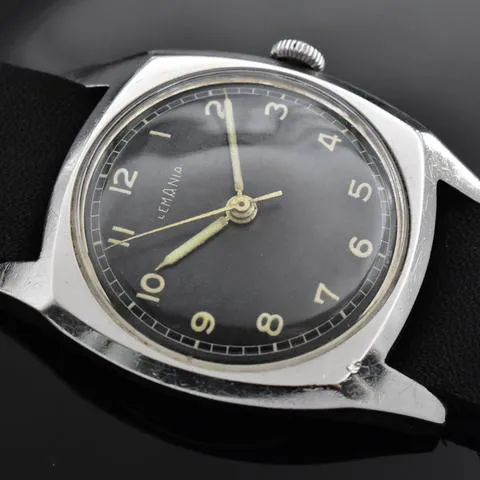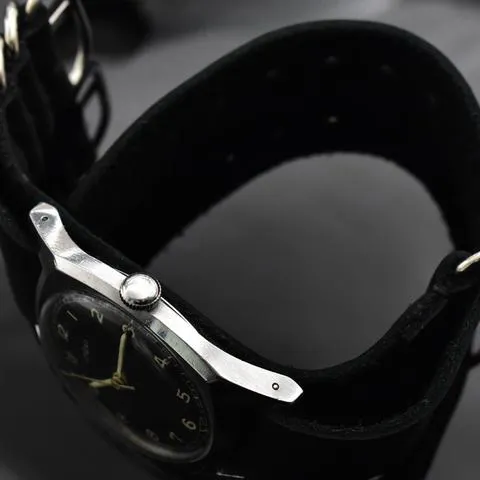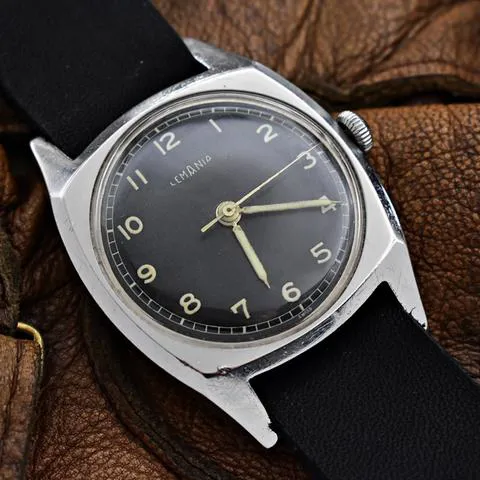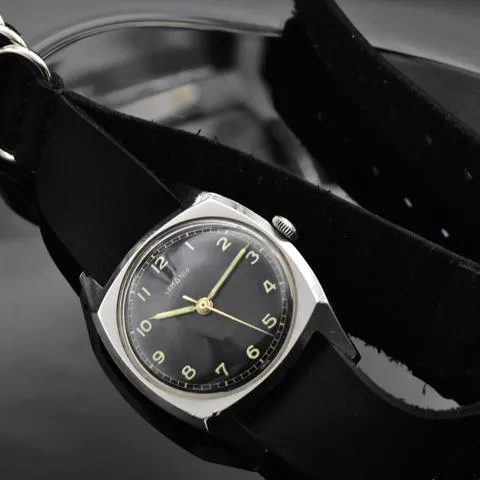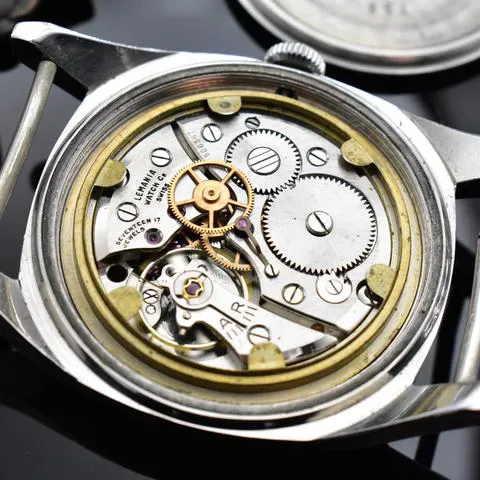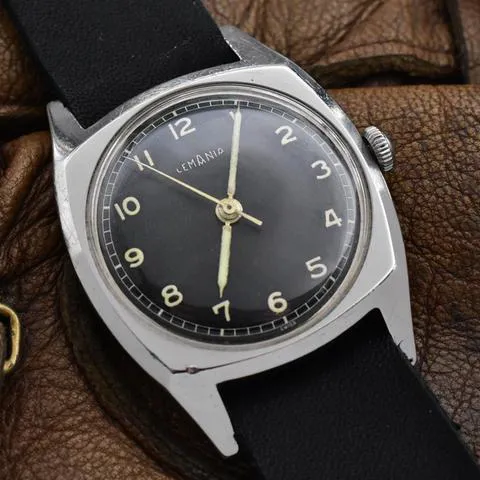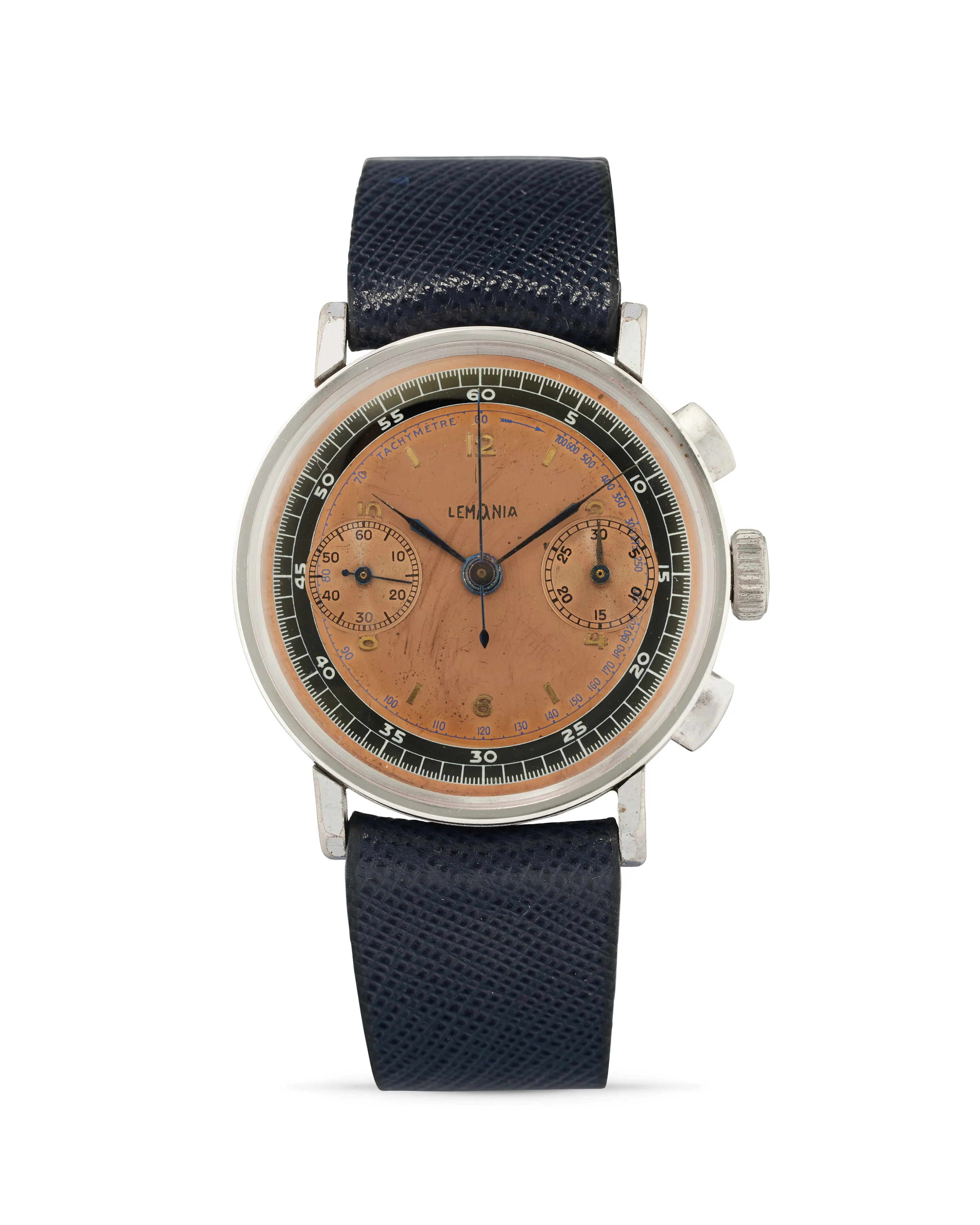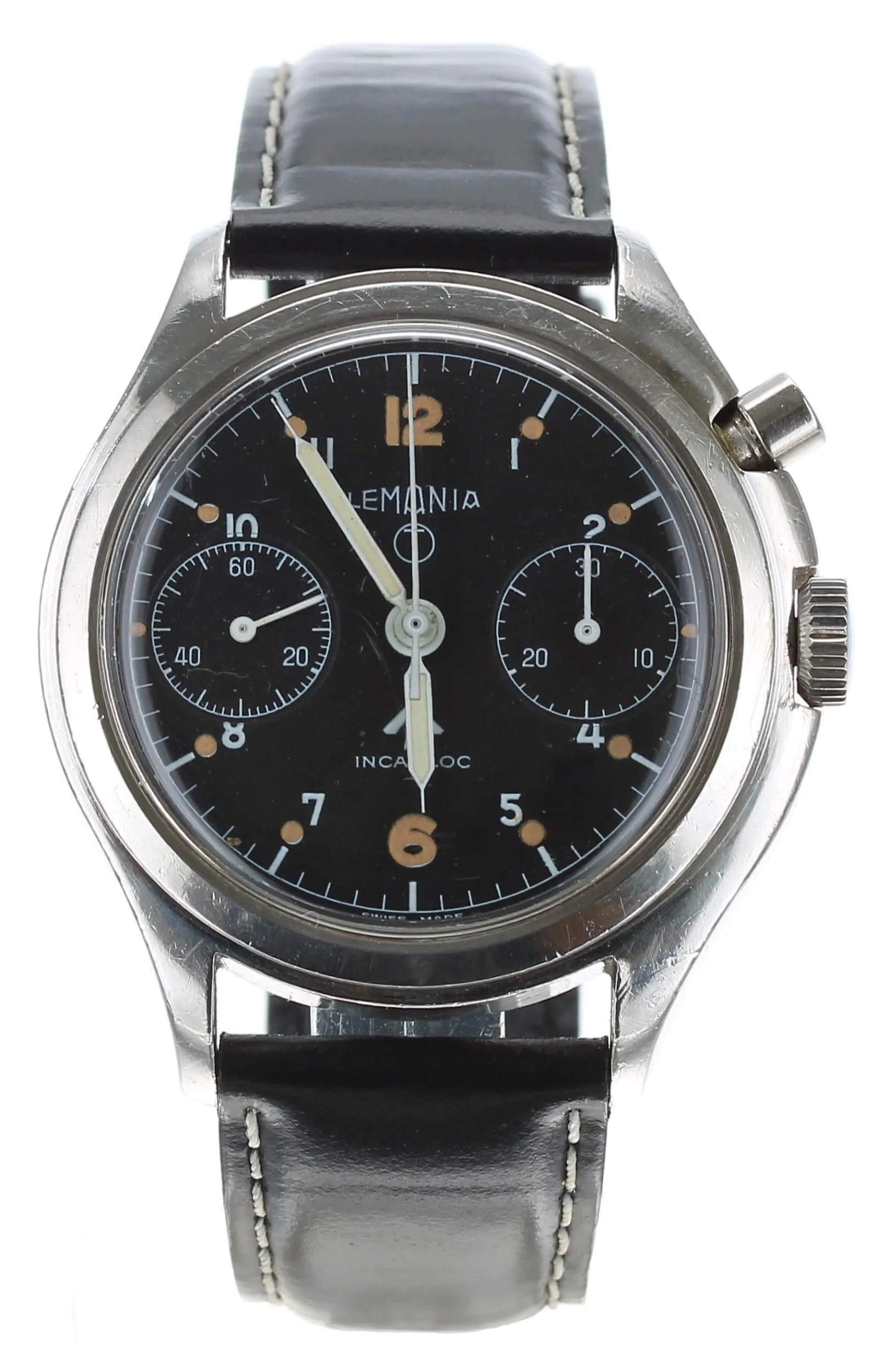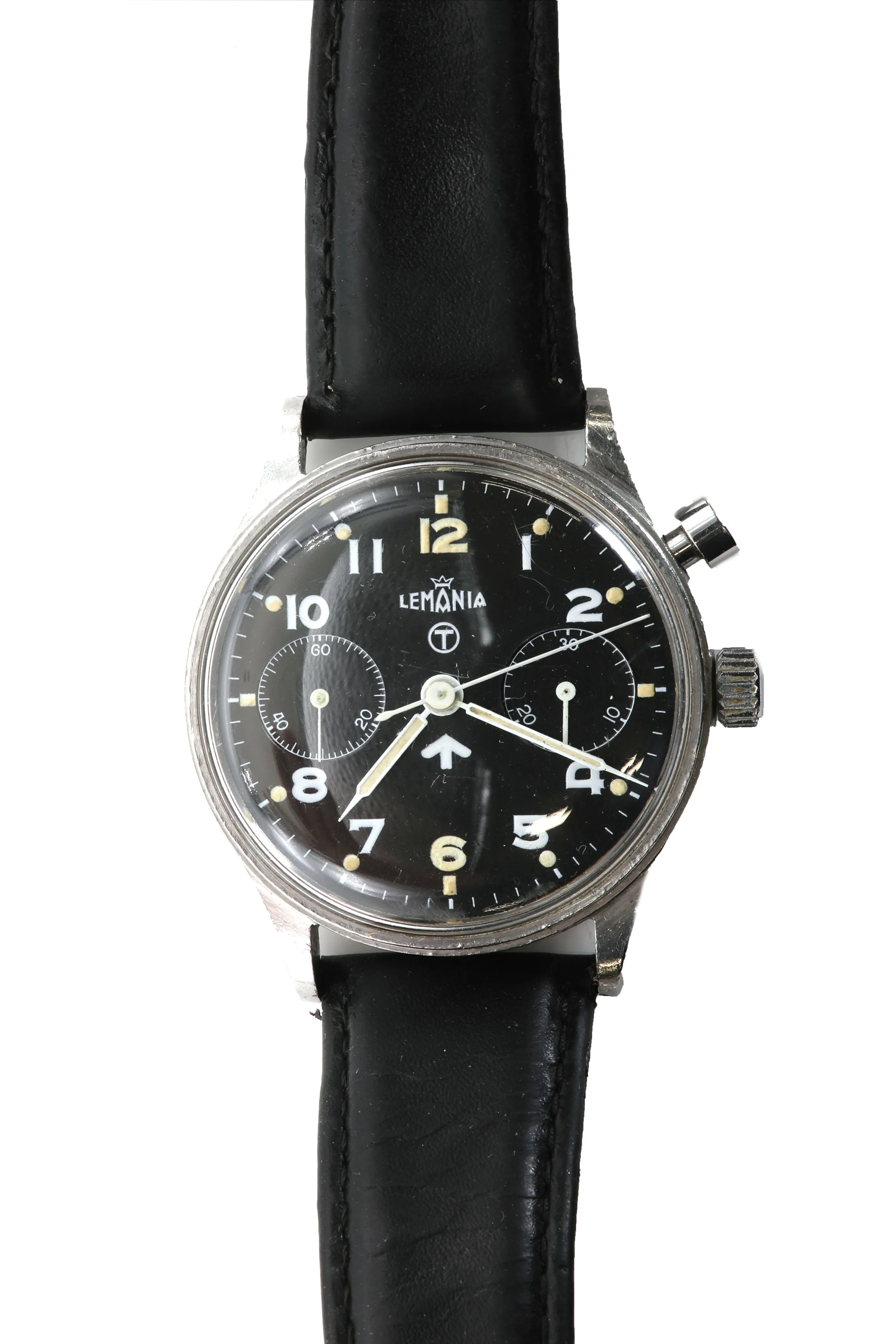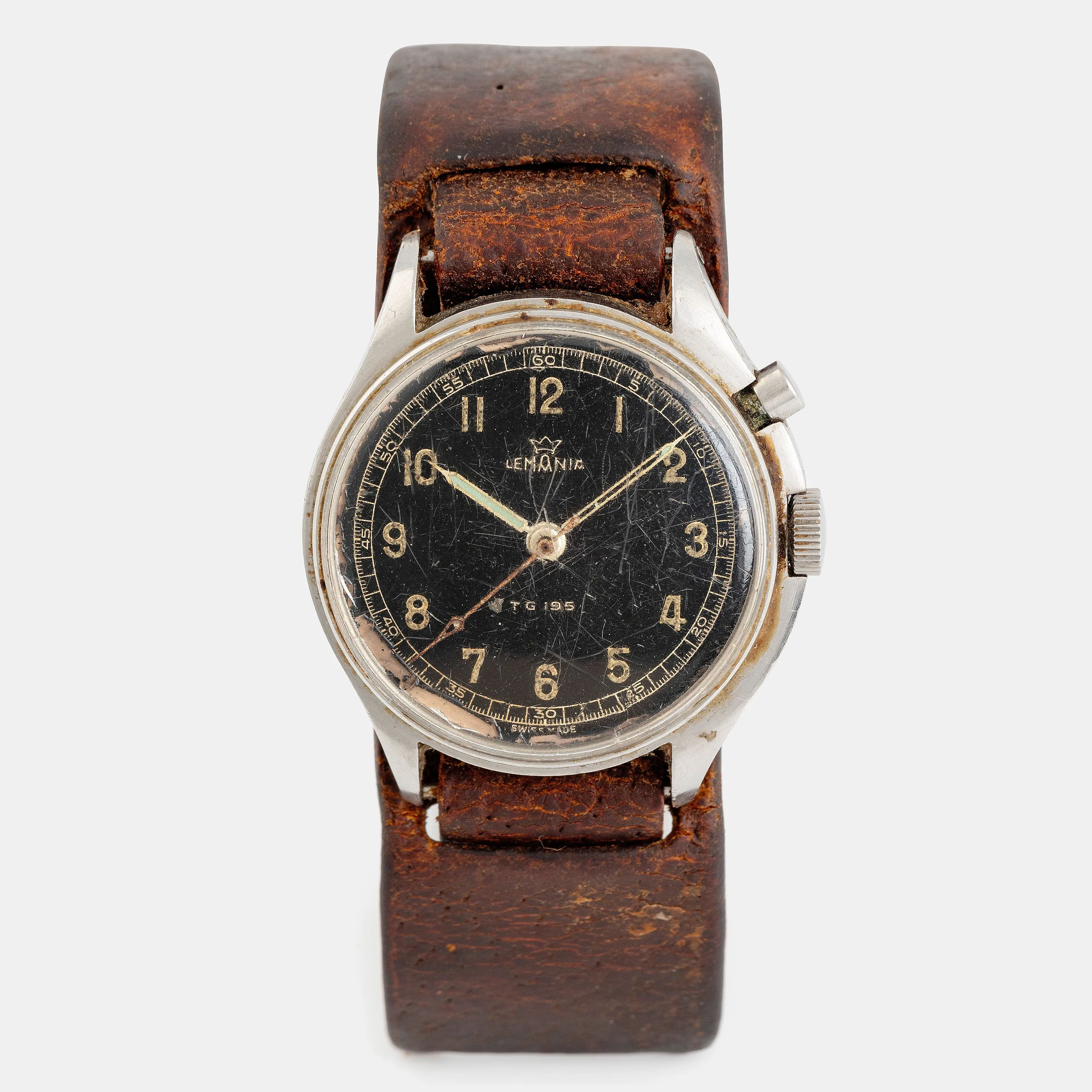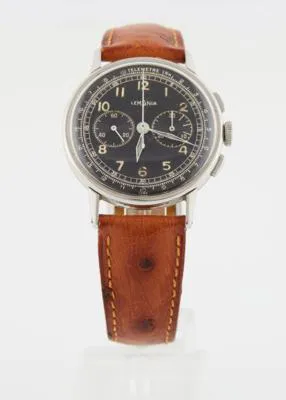Lemania 1938 Lemania Majetek Czech Pilot’s Aviator Watch WW2
Basic Info
Listing code : IHRIT0
Brand : Lemania
Reference number : 261
Year of production : 1938 (Approximation)
Condition : Used (Good)
Scope of delivery : No original box, no original papers
Gender : Men's watch/Unisex
Location : Czech Republic, CZ
Price : 2,350
Availability : Item is in stock
Extremely Rare Pilot Pilot AVIATOR Wrist Watch Lemania Majetek Czech Army 1938 WW2 with leather strap NATO
World War II, military, Czech Army, pilots
Official wristwatch from the manufacturer Lemania.
The vintage aviator classic of Czech aviators from the years between 1930-40.
Rare collector's watch!
Casing: casing made of stainless steel with one screwed back lid, signed "Majetek Vojenské Správy D974".
Diameter: 38 mm without the crown, thickness: 9 mm
Movement: s/n 506347, Swiss manufacture (manufactured approx. in 1938), silver-plated hand wound movement, recently serviced by old czech professional watchmaker.
Dial: original black military dial, signed: Lemania, swiss made .
Hands: original hands.
Crown: original crown.
Glass: plaxiglass.
Condition: good condition, with some signs of wear.
Please see photos
History:
1938 Lemania Majetek Czech Pilot’s WW2 watch.
The Majetek Pilots watch was issued to members of the Czech Air Force in the late 1930’s and early 40’s and produced by three different brands – Longines, Lemania and Eterna.
It’s unique 37mm. cushion-shaped steel case, black dial, and simple Arabic hour numerals form a sharp package that looks just as relevant today as it was back then.
The Lemania name first appeared in 1930, right before the company was integrated into Societe Suisse pour l’Industrie Horloge (SSIH), where it joined Omega and Tissot. SSIH along with AUSAG were the two dominant Swiss watch collectives that would later be combined to form the Swatch Group in the early-1980s.
Lemania was always predominately a manufacturer and designer of movements. The partnership between Lemania and Omega was especially strong, and today Lemania still supply movements for the Omega Speedmaster.
From a Heuer perspective, things get interesting in 1978 when Lemania launched the 5100 movement, an automatic movement specifically designed as a response to the arrival of the low-cost Japanese quartz movements that were having a devastating impact on the Swiss watch industry.
In 1981 both SSIH and AUSAG were in serious financial trouble and the Swiss banks forced SSIH to sell some assets to its management team, which is backed by outside investors including the Piaget family. This new company was called Nouvelle Lemania and its not hard to imagine that now free of its corporate role as a pure movement-specialist, Nouvelle Lemania started to expand its horizons and starts to look at designing and assembling watches under the Lemania brand.
By 1982 it was Heuers turn to face major changes, with Jack Heuer being forced by the Swiss banks to sell Heuer-Leonidas to a new group of investors led by Piaget and Nouvelle Lemania so Heuer was now owned by Nouvelle Lemania and its no surprise that in 1983 we see Heuer phasing out its own Calibre 11/12/14/15 Chronomatic movement, to be replaced with the Lemania 5100 automatic movement, a movement that was significantly cheaper to produce that Heuers own Chronomatic design.
The theory that seems the most likely is that in order to create demand for its own movements, the newly independent Nouvelle Lemania itself designed several watches in the late 1970s early 1980s and then offered these watches to other Swiss watch brands. Given the parlous state of the Swiss watch-making industry, the offer of a newly designed chronograph with a low-cost 5100 Lemania movement must have been attractive.
Most of these Poor Mans versions were sold by brands a lot smaller than Heuer. Sinn, Croton, Hamilton and others. Given that Lemania were partially in control of Heuer, it wouldn’t be surprising if Lemania made the decision that Heuer would sell these designs using old Heuer model names and then looked to bulk up volume with sales to other brands.
Piaget/ Nouvelle Lemanias ownership of Heuer ended in 1985 when the investor group decided to sell Heuer to the Middle-East investment group Techniques d’Avant Garde (TAG).